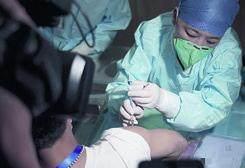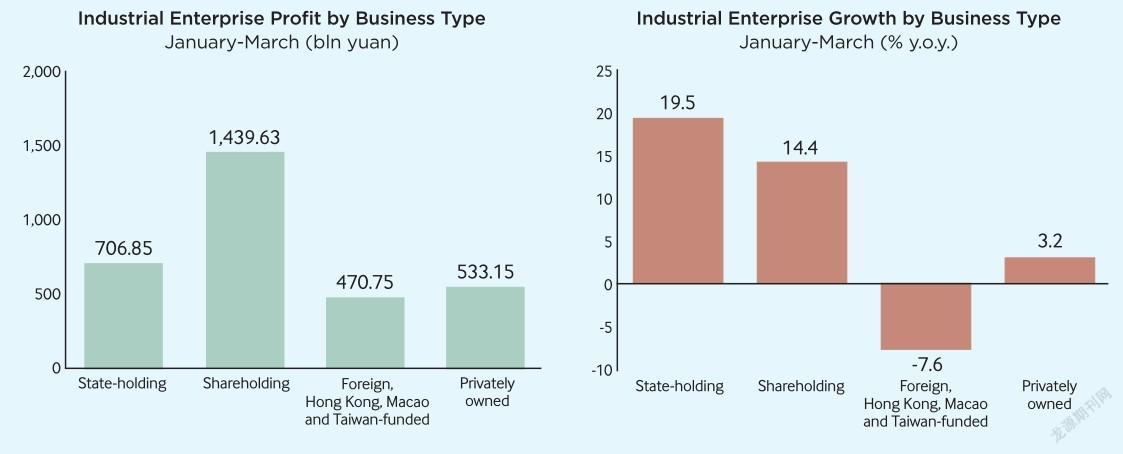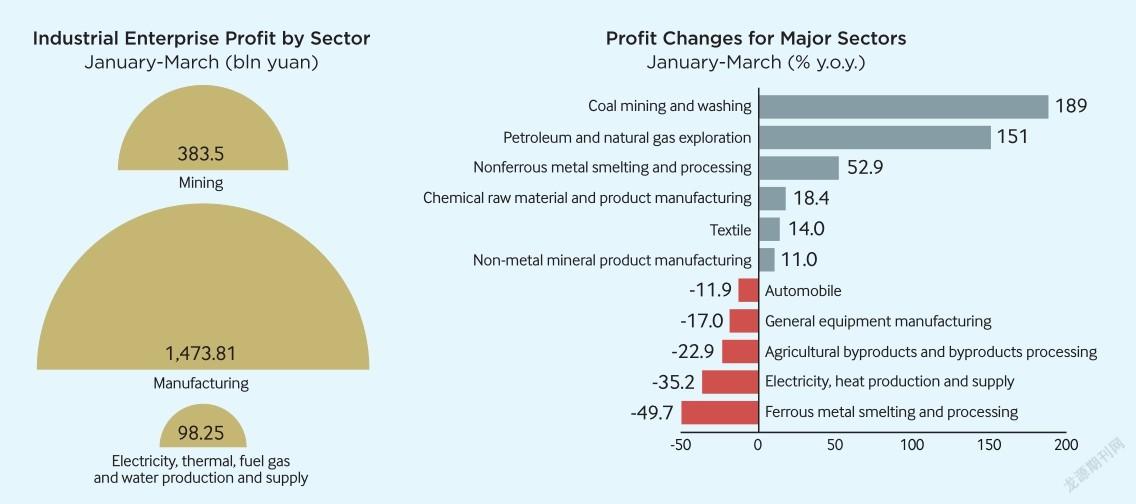THE SUMMIT OF SUCCESS
2022-05-13

Members of a Chinese scientific expedition on their way to the top of Mount Qomolangma in Tibet Autonomous Region, on May 4.
The team managed to reach the summit that same day and established an autonomous meteorological monitoring station at an altitude of over 8,800 meters. The new station is the worlds highest of its kind.
Grand Canal Refilled
Water pours into the Grand Canal in Dezhou City, Shandong Province, on April 28. This long waterway connecting the northern and southern parts of China had all of its dried-out sections refilled after a water-supply project kicked off on April 14.

Better Life for Migrants
Chinas migrant workers from rural areas enjoyed higher incomes and better living conditions in 2021, Xinhua News Agency reported on May 4.
In 2021, migrant workers in the country earned an average of 4,432 yuan ($669.7) per month, increasing by 8.8 percent year on year, according to a report released by the National Bureau of Statistics (NBS).
Migrant workers in the manufacturing industry saw their monthly income surge 10.1 percent last year, the NBS said.
The living area per capita of Chinas migrant workers climbed 0.2 square meter to 21.7 square meters in 2021, said the NBS, adding that 95.6 percent of migrant workers have access to the Internet.
The NBS data also showed that the population of Chinas migrant workers reached 292.51 million in 2021, an increase of 6.91 million over the previous year.
New Research
Chinese scientists have developed a new method to convert carbon dioxide and water into glucose and fatty acids.
The technique comes after another group in China successfully synthesized starch from carbon dioxide in 2021, and it has provided fresh potential for artificial or semi-artificial food production.
The researchers from the University of Electronic Science and Technology of China, the University of Science and Technology of China and the Chinese Academy of Sciences described a hybrid electrobiosystem in a study published in the journal Nature Catalysis on April 28.
The system couples spatially separate carbon dioxide electrolysis with yeast fermentation, which efficiently converts carbon dioxide into glucose with a high yield.
It employs a nanostructured copper catalyst that can stably catalyze pure acetic acid from carbon dioxide, and then use genetically engineered yeast to produce glucose in vitro from electro-generated acetic acid.
The method is also shown to be capable of producing other products like fatty acids using carbon dioxide, according to the study.
“This process can be understood as converting carbon dioxide into vinegar and feeding it to yeast to produce glucose and fatty acids,” said Zeng Jie, the papers co-corresponding author from the University of Science and Technology of China.
The upcycling of carbon dioxide into value-added products represents the tantalizing possibility of a renewable-electricitydriven manufacturing industry and a substantially untapped opportunity to tackle environmental issues and achieve a circular economy, the researchers said.
“With an electrolyte reactor and different microorganisms, we can produce starch, pigment or medicines in the future,”said Xia Chuan, the papers cocorresponding author from the University of Electronic Science and Technology of China.
Joint Patrol
Three Chinese law enforcement vessels returned to a port in Yunnan Province on April 29, concluding the 116th joint Mekong River patrol by China, Laos, Myanmar and Thailand.
Five vessels from the four countries, with 105 law enforcement officers on board, sailed over 700 km for four days and three nights to ensure safety and stability along the river basin, according to the Yunnan provincial public security department.
The Mekong River, known as the Lancang River in China, is a vital waterway for cross-border shipping.
China, Laos, Myanmar and Thailand have been conducting joint patrols on the river dating back to December 2011.
Plastic Ban
Beijing will ban the use of nondegradable plastic packaging by express delivery outlets by year-end, amid Chinas efforts to control plastic pollution, local authorities said on April 28.
To reduce the use of nondegradable plastic products from the source, the delivery outlets in the national capital will be also prohibited from using single-use plastic woven bags, according to the Beijing Municipal Commission of Development and Reform.
By the end of 2022, digital waybills, packaging tape narrower than 45 mm, and recyclable bags will basically cover the whole courier sector in the city.
In addition to the courier sector, Beijing has launched measures to restrict or even ban the use of non-degradable plastic products in other key industries involving catering, food delivery, wholesale and retail.
According to rough statistics from 2021, the offline stores of the citys major supermarkets including Jingkelong, CSF Market, Walmart and Carrefour saw the sales of plastic shopping bags fall by 37 percent, or 23 million, from the previous year.
Beijing has made headway in the treatment of plastic pollution, but it still faces multiple challenges and needs to make further efforts, said a spokesperson of the commission.
In 2020, China released a plan to ban or significantly reduce the production and use of environmentally unfriendly plastic products in the next five years to contain pollution.
By 2025, the country expects to effectively control plastic pollution, substantially reduce the amount of plastic waste in landfills of major cities, establish a complete plastics management system and make progress in the development of alternative products, according to the plan.
Lots of Fun
One-month-old Siberian tiger quadruplets play at Yunnan Wild Animal Park in Kunming, Yunnan Province, on May 3.

Emergency Language Service
A language service team was established in Beijing on April 28, offering aid on dialects, foreign languages, and sign language in urgent situations.
The National Language Service Corps of China was jointly launched by 29 partners, including the Beijing Language and Culture University.
The need for such a service was raised in 2020 when medical workers from other parts of China were sent to Hubei Province and had problems understanding local dialects.
A digital reference for standard Chinese-Hubei dialect translation was widely welcomed at that time.
More such references and information technology products will be the focus of next-stage work, said Chinas Vice Minister of Education, Tian Xuejun.
Vaccine Trial
A clinical trial volunteer receives a dose of Chinas inactivated vaccine against Omicron variants in Hangzhou, Zhejiang Province, on May 1. This inactivated vaccine was approved for clinical trials on April 26. The clinical trials are expected to conclude in three to four months.

Archaeology Museum
An archaeology museum opened to the public in Xian, capital of Shaanxi Province on April 28.
The Shaanxi Archaeology Museum, which features the history of archaeology and protection technologies, has an indoor exhibition area of 5,800 square meters and an outdoor exhibition area of 10,000 square meters.
A total of 5,215 relics are on display. Most of them are exhibited to the public for the first time, including a tombstone excavated with an epitaph written by Yan Zhenqing, one of the most renowned calligraphers in Chinese history.
Items that have been repaired by archaeologists using advanced technologies are also showcased, including a bronze chariot from the Western Zhou Dynasty (about 1046-771 B.C.). The excavation site of the chariot is also presented.
Home to the world-famous Terracotta Warriors, Xian is renowned for its rich cultural heritage resources. “By showing the real scene at the excavation site, the museum aims to offer the public a closer look at archaeological research,” said Sun Zhouyong, curator of the museum.
Software Sector
The software and information technology sector sustained stable growth in the first quarter of the year, with its revenue from software-related business rising 11.6 percent year on year to over 2 trillion yuan ($302 billion), according to the Ministry of Industry and Information Technology.
Companies in the sector raked in 203.1 billion yuan ($30.7 billion) in combined profits during the period, down 3.9 percent year on year, shrinking from the 7.6-percent decline registered in the first two months.
In the first three months, Chinas software exports came in at $11.6 billion, up 4.3 percent year on year, the data showed.
Power Consumption
Chinas power consumption is expected to rise between 5 percent and 6 percent in 2022, according to a report from the China Electricity Council.
Due to sporadic resurgences of domestic COVID-19 cases, the growth rate in April will likely be lower than it was in March.
However, as the current outbreaks are gradually brought under control, power usage is likely to pick up in May and June.
It is estimated that the countrys electricity consumption will improve 3.5-4.5 percent year on year in the first half of 2022.
If the impact of COVID-19 on the economy lessens, with the implementation of pro-growth measures and a low comparison base, electricity consumption is expected to grow faster in the second half of the year than in the first half, according to the report.
Tibets GDP
Tibet Autonomous Regions GDP stood at 51.7 billion yuan ($7.8 billion) from January to March(Q1), a growth of 6.4 percent year on year, the regional government announced on May 1.
The added value of designated large enterprises in the region increased 17.6 percent year on year, 11.1 percentage points higher than the national average and ranking first nationwide.
Cai Min, deputy head of the regional statistics bureau, said that due to rising international ore prices, the added value of the local mining industry in Q1 rose 24.2 percent from the same period of 2021.
At the end of March, there were 414,900 registered market entities in Tibet, a year-on-year increase of 11.2 percent.
Forex Market
Chinas foreign exchange (forex) market saw a turnover of 22.2 trillion yuan ($3.5 trillion) in March, up from 16.02 trillion yuan ($2.4 trillion) in February, official data showed on April 29.
Specifically, the turnover of forex transactions between banks and their clients totaled 3.83 trillion yuan ($579.5 billion), while that of interbank forex transactions stood at 18.37 trillion yuan ($2.78 trillion), according to the State Administration of Foreign Exchange.
In Q1, the countrys forex market turnover totaled 57.67 trillion yuan ($8.7 trillion), the data showed.
Record Setter
A newly developed rapeseed variety, Zhongyouza 501, has achieved a yield of 419.95 kg per mu (0.07 hectares) in Xiangyang, Hubei Province. It is a record high in China.
With an oil content exceeding 50 percent, the strain produces 211.57 kg of rapeseed oil per mu.
Rapeseed is a major oil crop in China.
At present, the average permu yield of rapeseed in China is 138.5 kg with an average oil-bearing rate of 43 percent, according to Professor Li Jiana at the College of Agronomy and Biotechnology at Southwest University.
In addition to its high yield,Zhongyouza 501 is also disease resistant and suitable for dense planting and mechanized harvesting.
The new strain was developed by a team led by Wang Hanzhong, an academician of the Chinese Academy of Engineering and Vice President of the Chinese Academy of Agricultural Sciences.
China-EU Trade
Bilateral trade between China and the EU jumped 12.2 percent year on year to $205.87 billion in the first quarter of the year, Gao Feng, a spokesperson for the Ministry of Commerce, said on April 28.
Trade in mechanical and electrical products, light industrial goods and hi-tech products climbed 10 percent, 19 percent and 31 percent, respectively.
China and the EU share broad common interests and a profound foundation for cooperation. The two economies are highly complementary, Gao said, adding that deepening bilateral cooperation is beneficial to both sides and the recovery of the world economy.
China is ready to work with the EU to maintain the stability of the industrial and supply chains and foster new growth drivers in COVID-19 prevention, digitization, science and technology to inject impetus into bilateral economic and trade cooperation, Gao concluded.
Consumer Confidence
Approximately 60 percent of Chinese respondents believed their personal finances would improve in the coming year, higher than the global average of 48 percent, according to the latest Future Consumer Index report published by global consulting firm Ernst& Young (EY). The report tracks changing consumer sentiment and behaviors across global markets with 18,000 consumers surveyed worldwide.
Meanwhile, 43 percent of Chinese consumers said their current financial situation has improved due to appropriate reductions in consumption, which is 9 percentage points higher than the global average.
As climate change and sustainable development continue to attract global attention, more consumers said they are aware of the impact of their consumption behavior on the environment and include it as one of the main factors in their consumption considerations, the report said.
The data showed that 32 percent of Chinese respondents said they will prioritize sustainability and the environment in buying products, higher than the global average of 26 percent.
“Chinese consumers have shown a higher awareness of sustainable development, beginning to rethink their consumption behaviors and pursuing sustainability,” said Denis Cheng, EY Greater China Consumer Sector Leader.
Expanding Production
Merck, a Germany-based pharmaceutical company, will invest nearly 100 million euros ($110 million) over six years in Wuxi, Jiangsu Province, it announced on April 28.
The project will increase biopharma single-use assemblies and custom design capabilities of Mercks existing production site, according to an agreement between the company and Wuxis hi-tech zone.
It is expected to create approximately 1,000 new positions and begin operations by 2024, the company said.
“Over the next five years, we expect strong growth in the bioprocessing market, with Asia growing in the mid-teens and China above 20 percent per annum on average,” said Marc Jaffre, Managing Director of Mercks life science business sector in China. “This strategic investment will support biotech innovation in China.”
NUMBERS
($1=6.6 yuan as of May 5)


